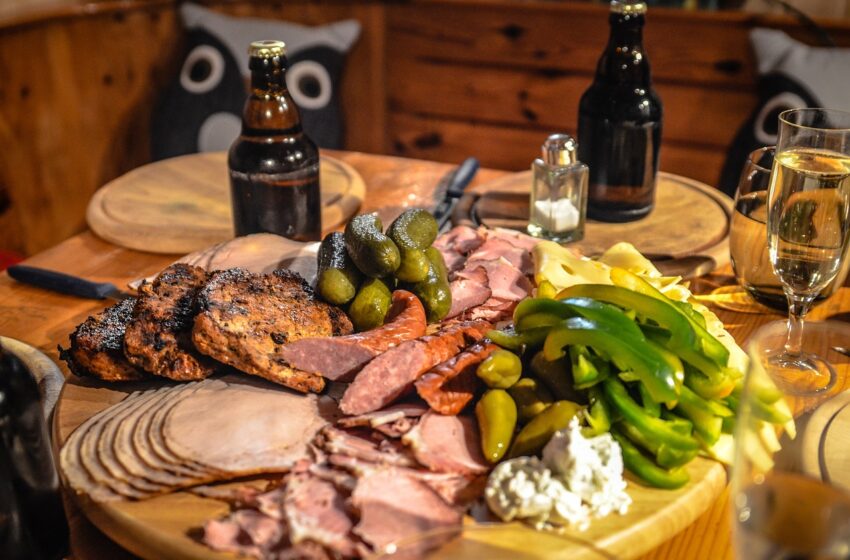The Truth About Nutrition Food Is About To Be Revealed

Choose a nutrition food that is high in nutrients. Nutrient-rich (or nutrient-dense) foods are low in sugar, salt, carbohydrates, and harmful fats. They are rich in vitamins and minerals while being low in calories. Micronutrients are vitamins and minerals that your body needs. They fuel your body and aid in your overall wellness. They can lower your chance of developing chronic illnesses. Getting them via meals guarantees that your body can adequately absorb them.
Eat a range of nutrition food to acquire a diversity of vitamins and minerals. Fruits and vegetables are inherently nutrient-dense foods. Nutrient-dense foods include lean meats, seafood, whole grains, dairy, legumes, nuts, and seeds.
The Way to Better Health
You may only obtain some of the micronutrients your body requires. Americans tend to consume meals rich in calories but deficient in micronutrients. These foods often have extra sugar, sodium (salt), and saturated or trans fats. This sort of nutrition food promotes weight gain. It might raise your chances of developing health problems like type 2 diabetes and heart disease.
According to the United States Department of Agriculture (USDA), the following micronutrients may be deficient in American adults.
Nutrients and Food Sources
- Calcium. Nonfat and low-fat dairy, broccoli, dark, leafy greens, dairy substitutes, and sardines
- Potassium. Bananas, raisins, cantaloupe, fish, nuts, spinach and other dark greens
- Fiber. Legumes (dried beans and peas), beans, seeds, strawberries, whole-grain foods, carrots, apples, raspberries, and colourful fruit and vegetables
- Magnesium. Peas, spinach, black beans, and almonds
- Vitamin A. Carrot, milk, eggs, sweet potatoes, and cantaloupe
- Vitamin C. Strawberries, kiwi, oranges, broccoli, tomatoes, and red and green bell peppers
- Vitamin E. Nuts, seeds, avocados, whole-grain foods, spinach and other dark leafy greens
All of the items listed above are healthy options. Here are some ideas for making your food more nutrient-dense.
Grains
Whole-grain foods have a low-fat content. They also include a lot of fibre and complex carbs. This keeps you fuller for longer and helps you avoid overeating. Examine the ingredient list for the term “whole.” Such as “whole wheat flour” or “whole oat flour.” Choose items with at least 3 grams of fibre per serving. Some enhanced flours include fibre but are low in nutrients.
Choose from the following foods:
- Oats rolled or steel cut
- Pasta made from whole grains
- Tortillas made with whole wheat
- Whole-grain crackers, breads, and rolls (wheat or rye)
- Brown rice or wild rice
- All grains include Barley, quinoa, buckwheat, whole maize, and cracked wheat.
Vegetables and Fruits
Fruits and vegetables are low in fat by nature. They supplement your nutrition food with minerals, taste, and diversity. Look for brightly coloured fruits and vegetables, mainly orange and dark green.
Choose from the following foods:
- Brussels sprouts, broccoli, and cauliflower
- Leafy greens such as chard, cabbage, romaine, and bok choy
- Dark leafy greens such as spinach and kale
- Root vegetables such as squash, carrots, sweet potatoes, turnips, and pumpkin
- Asparagus, snap peas, green beans, bell peppers, and snap peas
- Apples, plums, mangos, papaya, pineapple, and bananas
- Blueberries, strawberries, cherries, pomegranates, and grapes
- Grapefruits and oranges
- Melons, peaches, and pears
- Avocados With Tomatoes
Fish, Poultry, Meat, and Beans
Veal, Pork, Beef, and Lamb
Choose lean, low-fat cuts of beef. Look for terms like “round,” “loin,” or “leg” in their titles. Before cooking, remove any excess fat from the exterior. Before eating, remove any inner, separable fat. The healthiest methods to cook these meats include baking, broiling, and roasting. Limit your consumption of beef, pig, veal, and lamb. Even lean cuts have higher fat and cholesterol levels than other protein sources.
Poultry
Chicken breasts are an excellent chicken cut. They are heavy in protein and low in fat. Before cooking, remove the skin and exterior fat. The healthiest methods to cook fowl include baking, broiling, grilling, and roasting.
Fish
Fresh fish and shellfish should be wet and colourless. They should have a fresh scent and solid, springy meat. Choose frozen or low-salt canned fish if fresh fish is not available. The finest sources of omega-3 fatty acids are wild-caught oily fish. Salmon, tuna, mackerel, and sardines are examples. The healthiest methods to cook fish include poaching, steaming, baking, and broiling.
Beans and Other Nonmeat Protein Sources
Nonmeat protein sources may also be nutrient-dense. Try some beans, peanut butter, or other nuts or seeds.
Choose from the following foods:
- Beef, hog, veal, and lamb cuts that are lean
- Turkey bacon
- Ground turkey or chicken
- Salmon and other fatty fish found in the wild
- Haddock, as well as other white fish
- Tuna from the sea (fresh or canned)
- Shrimp, mussels, scallops, and lobster (nonfat)
- Beans, lentils, and chickpeas are examples of legumes.
- Nuts and seeds, including nut butter
Dairy and Dairy Alternatives
Select skim milk, low-fat milk, or fortified milk alternatives. In recipes and coffee, try substituting evaporated skim milk for cream. Select cheeses that are low in fat or fat-free.
Choose from the following foods:
- String cheese
- Skim, nut, or fortified milk, such as soy or rice milk
- Skim ricotta cheese in place of cream cheese
- Plain nonfat yogurt in place of sour cream
- Low-fat cottage cheese
